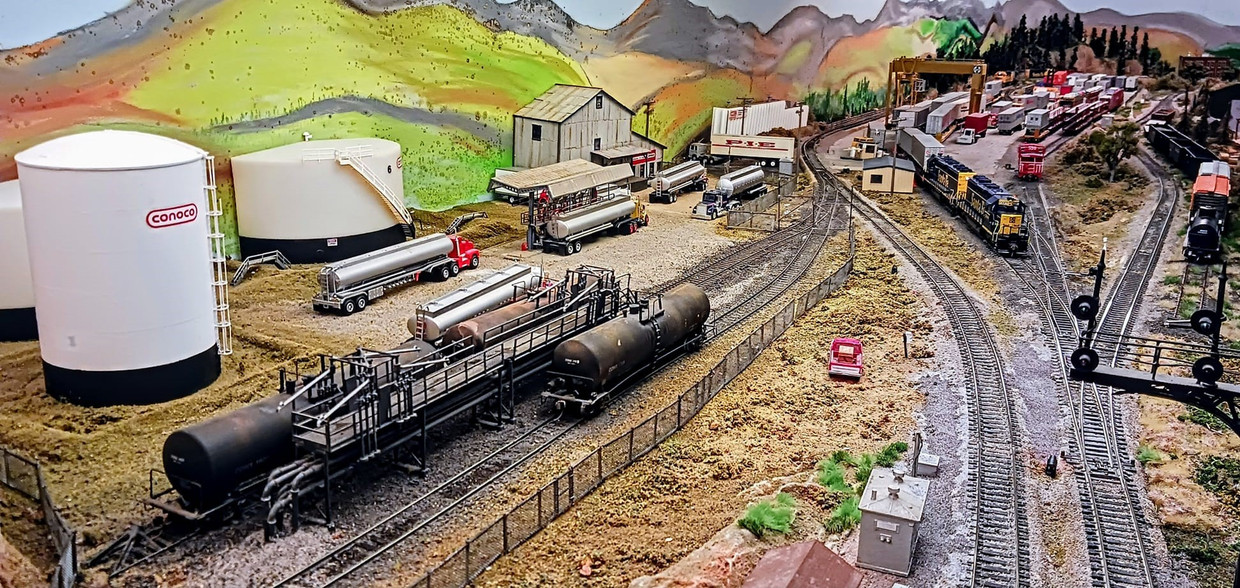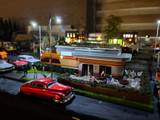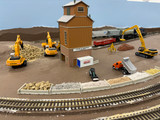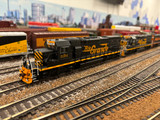Tips for Creating a Cohesive Model Railroad Scene
Creating a cohesive model railroad scene is a labor of love that requires meticulous planning and attention to detail. Whether you're a seasoned model railroader or just starting, a well-executed scene can transport viewers into a miniature world that tells a compelling story. In this article, we'll explore three key aspects of achieving cohesion in your model railroad scene: Planning the Layout, Selecting the Right Color Palette, and Storytelling Through Scenery.
Planning the Layout: Sketches and Mock-ups
One of the fundamental steps in creating a cohesive model railroad scene is meticulous planning. Here's how you can achieve this:
Sketches and Conceptualization:
- Start with a clear vision of what you want your scene to depict. Are you aiming for a rural countryside, an urban cityscape, or a historic era?
- Create rough sketches or diagrams to map out the track layout, including curves, inclines, and any special features you want to incorporate.
- Consider the scale you're working with, as this will influence the level of detail you can achieve.
Mock-ups and Prototypes:
- Build small-scale mock-ups or prototypes to test your layout ideas. This will help you identify potential problems and refine your design.
- Pay attention to track alignment, clearances, and the flow of your scene. Make adjustments as needed to ensure smooth operation and realistic aesthetics.
- Experiment with different track configurations, terrain features, and structures to find the best fit for your vision.
Color Palette and Seasonal Changes
The choice of colors and how you handle seasonal changes can significantly impact the cohesion of your model railroad scene:
Selecting the Right Color Palette:
- Research the real-world locations and time periods that inspired your scene. This will help you choose an appropriate color palette.
- Pay attention to natural elements like soil, vegetation, water, and sky. Match the colors to your chosen setting's season and climate.
- Use color theory to create harmony within your scene. Consider complementary, analogous, or monochromatic color schemes that evoke the desired mood.
Seasonal Changes and Weathering:
- To enhance realism, create different scenes for various seasons, such as spring, summer, autumn, and winter. This can be achieved by changing foliage, adding snow, or adjusting lighting.
- Weathering techniques, like rust, dirt, and moss effects, can make structures and rolling stock look weathered and well-aged, contributing to the overall authenticity of your scene.
Storytelling Through Scenery: Conveying a Narrative
A cohesive model railroad scene should tell a story that captivates viewers. Here's how you can convey a narrative through your scenery:
Identify Key Elements:
- Decide on the central theme or story you want to convey. Is it a bustling train station, a remote mining operation, or a tranquil countryside?
- Select key elements that represent your chosen theme, such as buildings, vehicles, people, and natural features.
Attention to Detail:
- Pay meticulous attention to detail when designing and placing these elements. They should reflect the era, location, and mood of your scene.
- Use figures, vehicles, and mini-dioramas to create small narratives within your larger scene. For example, a figure waiting at a station or a group of workers at a construction site can add depth and intrigue.
Lighting and Atmosphere:
- Experiment with lighting to set the mood. Soft, warm lighting can create a cozy atmosphere, while dramatic lighting can highlight specific areas of interest.
- Incorporate realistic elements like smoke, fog, or rain to add atmosphere and further immerse viewers in your narrative.
Conclusion
Creating a cohesive model railroad scene is a rewarding endeavor that requires careful planning, attention to detail, and a commitment to storytelling. By following these tips for planning the layout, selecting the right color palette, and conveying a narrative through scenery, you can transport your viewers into a miniature world that leaves a lasting impression. Remember that patience and creativity are key, and enjoy the journey as you bring your model railroad scene to life.
Photo Courtesy of Jason Stiles, Photo of Dave Acheson's Ho Scale Colorado Joint Line Railroad.
Recent Posts
-
Enhancing Your Model Railroad: Adding Spectacular Special Effects
Embarking on the journey of model railroading opens up a world of creativity and craftsmanship, wher
-
All Aboard the Wisdom Express: Life Lessons from Model Railroading
Embarking on the journey of model railroading opens the door to a world where imagination meets prec
-
Capturing History in Miniature: The Art of Prototype Modeling in the Model Railroad World
Prototype modeling in the model railroad world involves creating miniature replicas of real-life tra




